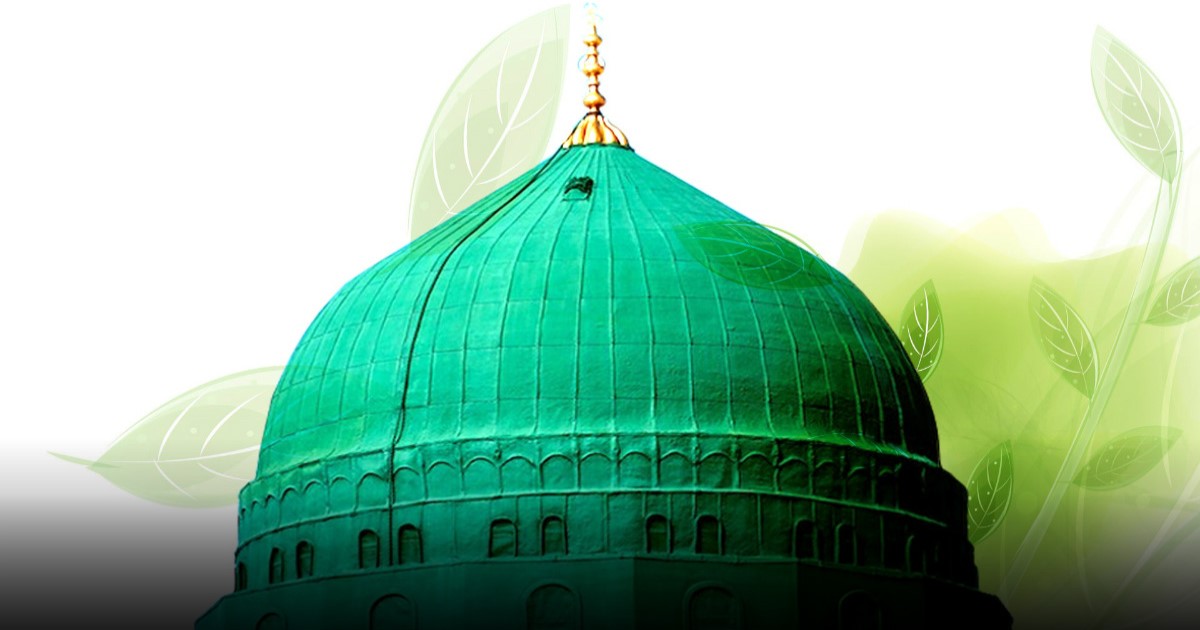
A biography of the Prophet Muhammad (s) cannot be complete without information about his ancestors. Nearly half of humanity traces its religious beliefs to the same ancestors as the Prophet Muhammad (s). Jews, Christians, and Muslims find a common link in the Prophet Abraham (Ibraahim). Arabs and Jews are Semitic people through their bloodline with the Prophet Ibraahim. The Arab branch descends from Ishmael (Ismaa’il), the Prophet Abraham’s son with Hagar (Haajar), while the Jewish and Christian lines descend from Isaac (Isshaaq), the son of Abraham and Sarah (Saarah).
The Arabs can be divided into two broad categories: Arab Al-Baa’idah (the extinct Arabs, such as the People of Aad and Thamud) and Arab Al-Baaqiyyah (the surviving Arabs).
Of the second category, there are two groups: Al-Arab Al-Aaribah (those who descended from Qahtaan, particularly from his son Yaa’rub) and Al-Arab al-Mustaaribah (those who came from Adnaan some twenty generations after Ismaa’il and whose original language was not Arabic although they later acquired it).
The Prophet Muhammad is from Adnaan, who is his twentieth-great-grandfather. The original language of Prophet Ismaa’il was not Arabic, but he grew up among the Arabic-speaking people of Jurhum, who were from Qahtaan in Yemen but had settled in Makkah to be near the blessed Zamzam well. Ismaa’il later married into the Jurhum tribe. As such he was both an Adnaani and a Qahtaani.
The Prophet’s genealogy as recorded by earliest historians is as follows:
The Prophet’s mother was Aaminah bint Wahb, bin Abdu Manaaf, bin Zuhrah, bin Kilaab, bin Murrah, bin Ka’ab, bin Luyayy, bin Ghaalib, bin Fihr, bin Maalik, bin An-Nadhr. The Prophet’s parents shared some common ancestors.
The Jurhum became the custodians of the Ka’bah (the cube-shaped building in Makkah), but over time they began to commit evil acts, such as exploiting the pilgrims, cheating them, and using the gifts given to the House of Allaah for personal benefits. Eventually they were forced out from their prestigious position by the tribe of Al-Khuza’ah.
Years passed, and Al-Khuza’ah did something far worse. Their leader, Amr bin Luhayy Al-Khuzaa’i, for the first time introduced idol worship in a house that Prophets Ibraahim and Ismaa’il had consecrated for the worship of the one true God, Allaah. Amr brought an original idol of Hubal from Syria, which at the time was a major idol-worshipping society. Soon there were other idols, such as Laat, Uzzah, and Manaat. So many were added over the years that by the time the Prophet Muhammad appeared on the scene, there were 360 large and small idols inside the House of Allaah. Among them were also Wadd, Su’aa, Yaguth, Ya’uq, and Nasr, the idols that were worshipped in the time of Prophet Noah (Nuh).
The Quraysh, were still not seen as a major player, until one of the ancestors of the Prophet, Qusayy bin Kilaab, married the daughter of Hulayl bin Hubshiyah, the chieftain of Khuza’ah, and eventually became its de facto leader. Qusayy lived five generations before the Prophet and was his great-great-grandfather.
Qusayy’s son was Abdu Manaaf, and his son was Haashim (Amr), the Prophet’s great-grandfather. He was called Haashim, which means bread masher, because he mashed bread and made some kind of porridge from it for the pilgrims. Haashim had married a smart and independent-minded lady named Salma bint Amr in Yathrib, whom the Prophet later renamed Madinah. Salma was from the tribe of Banu Najjaar. Fate had created a bond for the would-be Prophet with a city that he would one day migrate to.
After Qusayy, and after much wrangling among the various tribes, the mantle of leadership was passed on to Haashim. Haashim is known to have started the tradition of the winter trade journeys to Yemen and the summer trade journeys to Syria (Rihlaat Ash-Shitaai was-Saif). These two trade journeys were the economic lifelines for the Quraysh and are famously mentioned in the Qur’aan, chapter 106.
Haashim’s wife, Salma, gave birth to a boy who was named Shaybah,1 which means gray-haired, because he had streaks of white hair on his head. However, to the world he became known as Abdul Muttalib. There is an interesting story regarding how he came to be known as Abdul Muttalib.
When Haashim died, Salma and Shaybah continued to live in Yathrib. Shaybah’s paternal family in Makkah did not know Haashim had left a son. When Haashim’s brother, Muttalib, discovered he had a nephew in Yathrib, he came and somehow convinced the young man (and perhaps his mother) that a great future awaited him in Makkah. As the two entered Makkah, Shaybah was walking behind Muttalib, giving the impression to some that he was a slave, so they called him Abdul Muttalib (Slave of Muttalib). That name stuck with him the rest of his life, and few, if any, addressed him as Shaybah after that.
Abdul Muttalib was a smart, handsome, and wise young man. Because of these qualities, the leadership of the Quraysh was passed on to him a few years after Haashim’s death. Abdul Muttalib was well liked by his people.
One of the momentous contributions of Abdul Muttalib was the rediscovery of Zamzam, the well of blessed water that God had given to Ismaa’il when he was a baby crying of thirst in the arid valley of Makkah, between the hills Safaa and Marwah. Muhammad Ibn Isshaaq reported that when the Jurhum were forced out of Makkah, they filled in the Zamzam well, and over time it was forgotten.
It is said that one night when Abdul Muttalib was sleeping in the Hijr near the graves of Ismaa’il and his mother, Haajar (Hagar), a voice ordered him to dig Zamzam, the well of blessed water that had been lost over time.
When Abdul Muttalib and his son Al-Haarith, who was his only son at the time, found the opening of the well, they felt immense joy and cried out Allaahu Akbar (God is greater). The news about this huge find spread quickly, and the rest of the Qurayshi clan demanded their share of the water, saying they were his cousins and their sons. For a desert people, water is one of the most precious commodities. And Zamzam was no ordinary water.
Abdul Muttalib refused, saying the well had been shown to him and not to them. They continued to dispute with him about Zamzam, so he agreed to go to a female diviner from Banu Sa’ad Hudhaym in the Syrian uplands to settle the matter. On the way to Syria, Abdul Muttalib, his group, and those contesting his exclusive right to Zamzam ran out of their water supply. The situation became so hopeless that Abdul Muttalib said every man should dig a grave for himself while he had the strength, so if one of them died, the others would throw his body in it.
After some time had passed, Abdul Muttalib decided that it was not right to just wait for death. So he got up and rode his mount. As he proceeded, water gushed out from his camel’s knees. When the Quraysh saw the unnatural phenomenon, they took it as a sign that Abdul Muttalib had the right claim to Zamzam, and they acquiesced.
The Zamzam incident served to remind Abdul Muttalib that he had fewer sons than his cousins had. So he vowed that if Allaah gave him ten sons, he would sacrifice one of them. The prayer was heard. Abdul Muttalib was blessed with nine other sons
and six daughters. His sons were Haarith (the first one), Abbaas, Hamzah, Abu Taalib, Zubayr, Hajla, Muqawwim, Dhirar, Abu Lahab (Abdul Uzzah), and Abdullaah.
His daughters were Safiyyah, Umm Al-Hakim, Aatikah, Umaymah, Arwa, and Barrah. Of these children, Abu Taalib, Zubayr, and Abdullaah, as well as all the daughters except Safiyyah, were from Abdul Muttalib’s wife Faatimah. Therefore, they, except for Abdullaah, were full uncles and aunts of the Prophet Muhammad. Abdullaah was the youngest of those sons and was the Prophet’s father.
After Abdul Muttalib was endowed with ten sons, he proceeded to fulfill his vow. He gave an arrow to each of his sons and asked each to write his name on it. He stood near the idol Hubal, gave the arrows to a man there, and told him, “Cast the lots of my sons with these arrows.” When the man drew the lot, it indicated Abdullaah, Abdul Muttalib’s favorite son.
So the father took Abdullaah by the hand and brought him up to Isaaf and Naailah, two idols to which the Quraysh offered their sacrifices. When the clan saw Abdul Muttalib with a large knife, they inquired about his intentions, and when told what he intended to do, they vehemently disagreed. They said he could not do so until he tried to ransom his son through some huge expiatory sacrifice. Abdullaah was most well-liked in the clan, and they would not let him be sacrificed like that.
Finally, one of the people in the crowd suggested he go to a sorceress in the Madinah area who was in contact with a spirit and who could help decide. Abdul Muttalib found her in Khayber. She told him to go home and draw a lot between Abdullaah and ten camels. If Abdullaah’s arrow was drawn, then he should add ten more camels and draw again until the camels’ arrow was drawn. He did what the sorceress said, but Abdullaah’s name came up each time until on the tenth attempt the camels’ arrow was drawn. Thus Abdullaah was saved, and Abdul Muttalib sacrificed the camels instead.
The Prophet Muhammad (s) once said, “I am the son of two sacrificed ones,” meaning Ismaa’il and Abdullaah.

Posted By: Ekram Haque
Ustadh Ekram Haque is a writer, journalist, author, and khateeb. He has a Master’s degree in Journalism from the Columbia University Graduate School of Journalism. He has written hundreds of articles in large and small publications, including a number of Op-Ed and features articles in the Dallas Morning News, News & Observer, Denver Post, Newsday and Asbury Park Press. He has taught the Seerah of the Prophet Muhammad Sallallaahu Alaiyhi WaSallam to different age groups and delivered weekly lectures on the Seerah at the East Plano Islamic Center in Plano, TX. Those lectures served as the nucleus for his recently published book, “Muhammad: Son of Abraham, Brother of Moses, Successor of Jesus.” He received much of his informal education about Islam from Sheikh Abul Yosr Mohamed Baianonie, then imam of the Islamic Center of Raleigh in North Carolina. Ustadh Ekram teaches the Seerah in a contemporary context and helps draw lessons that are relevant to our current challenges. “Only by following the Seerah of the Prophet Muhammad (s) can we successfully navigate through these turbulent times,” he said.